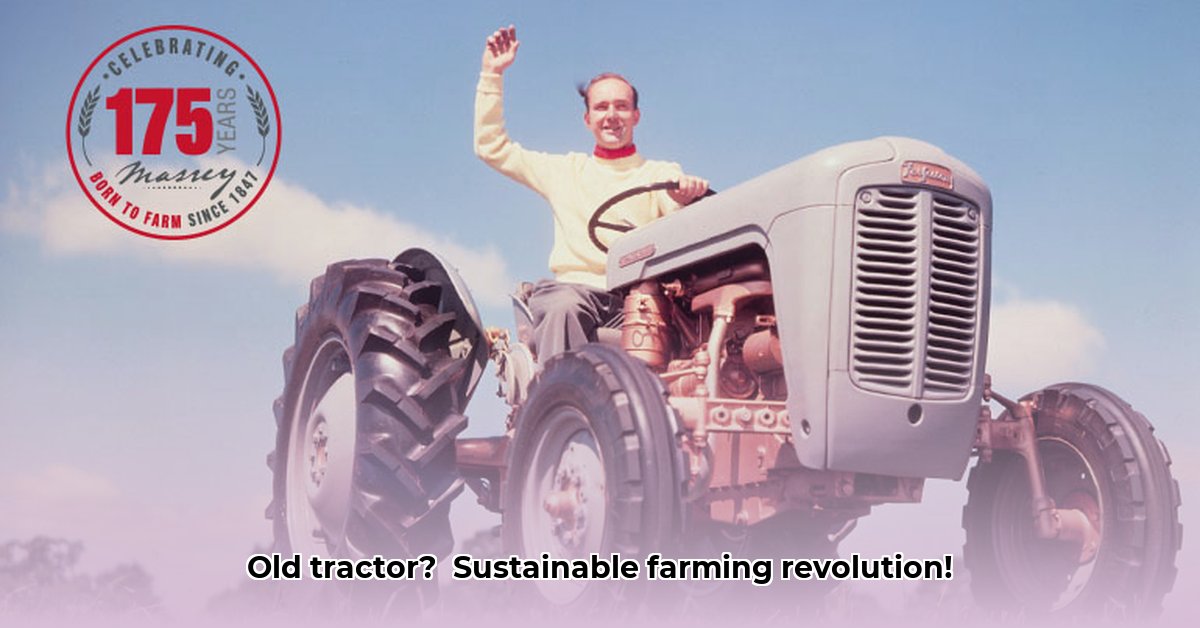
Ever wonder how effortlessly farmers attach implements to their tractors? This seemingly simple process owes its existence to a single, revolutionary invention: Harry Ferguson's three-point hitch. This system, initially met with skepticism and fierce resistance, transformed agriculture, leaving an indelible mark on sustainable farming practices that persists even today. This article delves into the story of the Ferguson tractor, its technological innovations, and the lasting impact it continues to have on global agriculture. For more on tractor history, see this site.
Ferguson Old Tractor: A Revolution in the Fields
Harry Ferguson, a visionary inventor, wasn't content with the arduous methods of pre-mechanized farming. The back-breaking labor and inefficient equipment of the time spurred him to create a better way. His solution, the three-point hitch, dramatically altered how implements were attached to tractors, making farming significantly easier and more efficient. This seemingly simple mechanism is the backbone of modern tractor technology, yet its inception was far from straightforward.
The Birth of a Better Way
Before Ferguson's innovation, attaching implements to tractors was a laborious and often dangerous task. Farmers struggled with heavy equipment, inefficient hitches, and inconsistent implement depth. Ferguson's system addressed these shortcomings with a design that allowed implements to effortlessly adjust to uneven terrain, ensuring consistent depth and reducing soil compaction. This simple engineering marvel not only saved time and labor, but also paved the way for more sustainable farming practices. Imagine the back-breaking work of manually attaching and detaching implements—Ferguson's invention revolutionized this aspect of farming, making it significantly more efficient and easier.
The Little Grey Fergie: David vs. Goliath
The Ferguson TE20, affectionately nicknamed the "Little Grey Fergie," became the embodiment of this agricultural revolution. Its compact size and surprising power made it ideal for smaller farms, challenging the dominance of larger, less adaptable tractors. However, its success wasn't without its obstacles. Ferguson faced fierce opposition from established agricultural giants like Ford, leading to protracted legal battles that tested his resolve. These battles, however, highlighted the superiority of his three-point hitch, ultimately shaping the future of tractor design. The enduring success of the "Little Grey Fergie" stands as a testament to Ferguson's innovation and business acumen.
The Magic of the Three-Point Hitch: Simple Brilliance
The genius of the three-point hitch lies in its elegant simplicity. Think of it as a sophisticated seesaw: two lower arms connect the implement to the tractor, while an upper link maintains balance. This system allows implements to respond to the terrain, maintaining consistent depth and minimizing soil compaction. This simple yet ingenious design dramatically increased efficiency, making attaching and detaching implements a breeze and improving overall productivity. It solved the age-old problem of reliably using various types of equipment without compromising the land.
A Sustainable Legacy: Farming’s Green Revolution
The impact of the Ferguson tractor and its three-point hitch on sustainable farming is profound. The increased efficiency translated to less fuel consumption, reducing the environmental footprint of agriculture. The optimized implement function minimizes soil disruption, promoting healthier soil and reducing the need for harmful chemicals. By encouraging minimal-till farming techniques, Ferguson inadvertently contributed to carbon sequestration and overall environmental stewardship. This efficiency directly translated into a more sustainable agricultural model.
The Ferguson Legacy Lives On: A Future in the Fields
While vintage Ferguson tractors are now collector's items, their legacy lives on in the three-point hitch, still the standard for nearly every modern tractor. This enduring design showcases its inherent brilliance and adaptability. Ongoing research and development continue to refine and enhance this foundational technology, integrating smart sensors and autonomous controls. This underscores the continuous evolution of sustainable agricultural practices, building upon the fundamental principles established by Harry Ferguson's genius.
What’s Next for Agriculture? A Collaborative Effort
The future of sustainable agriculture relies on collaborative efforts. Here’s how different stakeholders can contribute:
Agricultural Historians: Document the long-term economic and social effects of Ferguson’s innovations and legal battles. Preserve and share the story of Harry Ferguson and his contributions to agriculture.
Tractor Manufacturers: Continue developing autonomous implement control systems for optimized fuel and resource use. Implement sustainable manufacturing processes using renewable energy and recycled materials.
Farmers: Adopt precision agriculture techniques to maximize resource utilization and minimize environmental impact. Prioritize and invest in practices like crop rotation and cover cropping to improve soil health.
Agricultural Researchers: Invest in research on optimizing yield while minimizing environmental impact. Develop tools and technologies for real-time data analysis at the farm level, for better decision making and resource management.
The Ferguson tractor's story is more than just a technological advancement; it's a testament to human ingenuity and the profound impact a single invention can have on a global industry. It demonstrates how perseverance and a vision for a more sustainable future can profoundly change the world.